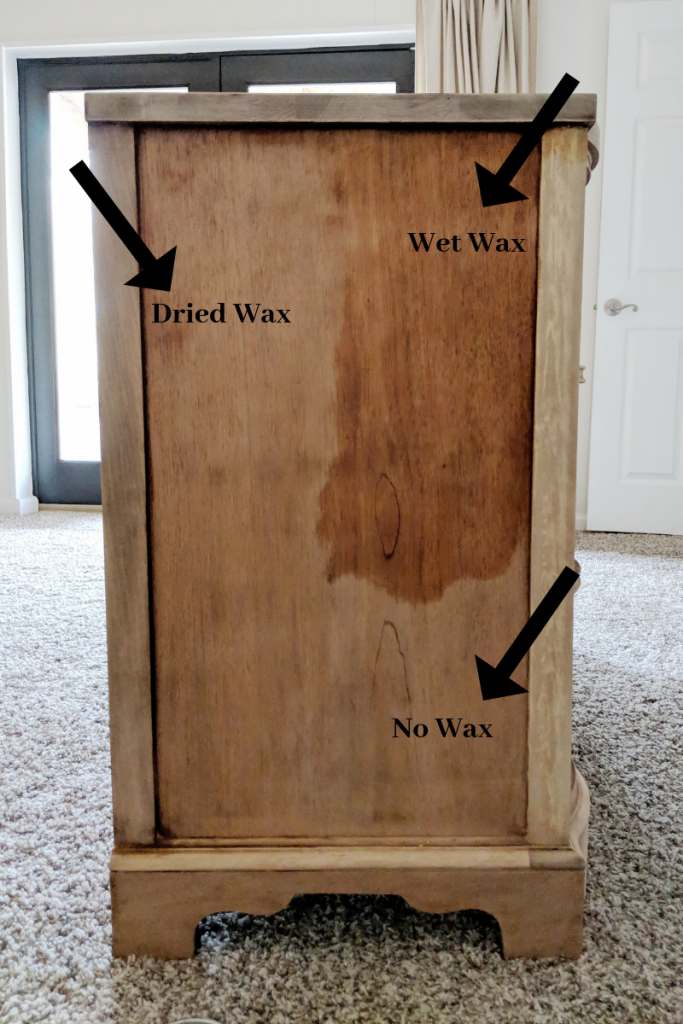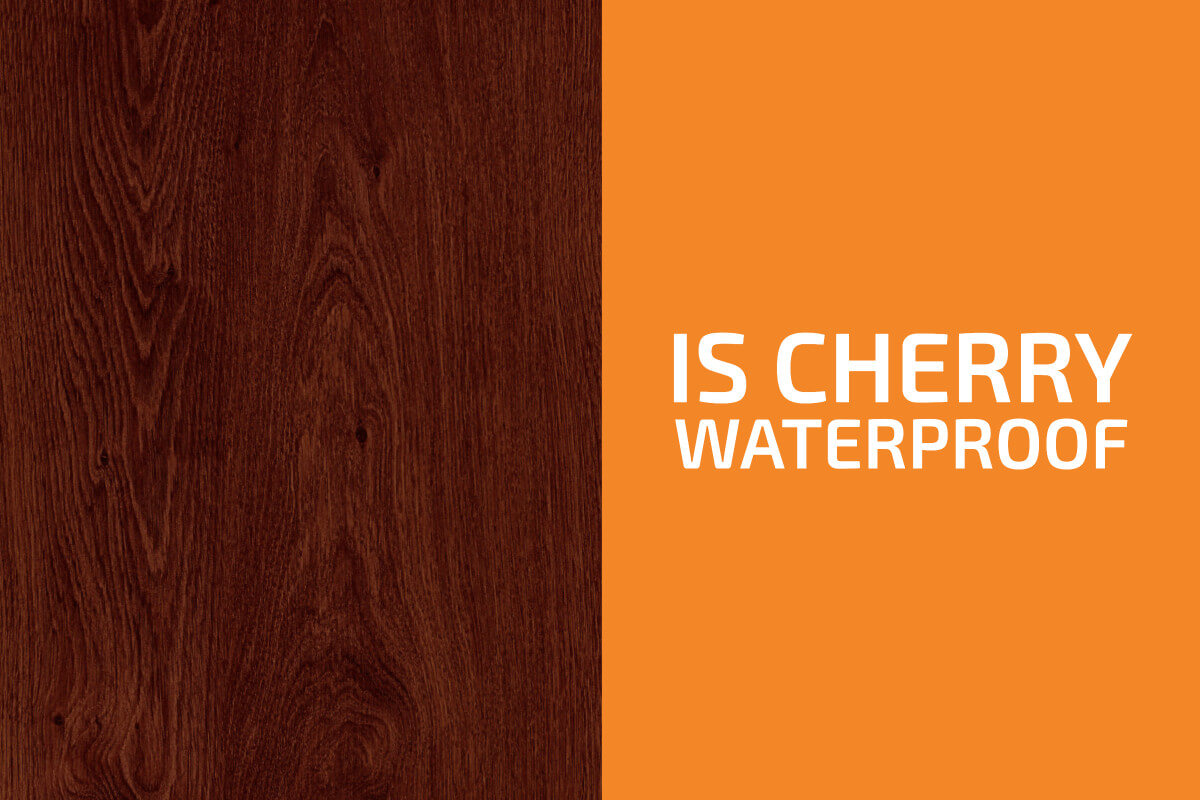Can cherry wood get wet? If you’re wondering whether this beautiful wood can handle a little moisture, you’re in the right place! Cherry wood is a popular choice for furniture and decor, but it’s important to know how it reacts to water. In this article, we’ll explore whether cherry wood can withstand getting wet and how to properly care for it. So let’s dive in and unravel the mysteries of cherry wood and water!
Now, you might be asking yourself, “Why do I need to know if cherry wood can get wet?” Well, accidents happen, spills occur, and sometimes furniture finds itself in damp environments. Understanding how cherry wood responds to water is crucial to keeping it looking its best and ensuring its longevity. From potential damage to proper cleaning techniques, we’ll cover everything you need to know to take care of your cherry wood pieces.
So, if you’re curious to learn more about how cherry wood reacts to water exposure and how to protect your cherished cherry wood items, keep on reading! We’ll provide you with all the essential information you need to keep your cherry wood looking pristine, even when life gets a little wet. So, let’s embark on this watery adventure and discover the secrets of cherry wood and its relationship with water!

Can Cherry Wood Get Wet?: Everything You Need to Know
Cherry wood is a popular choice for furniture and various woodworking projects. Its warm tones and rich grain make it a sought-after material. However, many people wonder if cherry wood can handle getting wet. In this article, we will explore the topic in-depth, providing you with detailed information about cherry wood and its ability to withstand moisture. So, let’s dive in and uncover the truth about cherry wood and water.
The Properties of Cherry Wood
Cherry wood, derived from the Prunus genus of trees, is known for its beautiful reddish-brown hue and smooth texture. It is a hardwood that has been used for centuries in furniture making, cabinetry, and decorative items. Cherry wood is prized for its durability and ability to develop a rich patina over time. However, when it comes to water, cherry wood does require some extra care and attention.
The Impact of Water on Cherry Wood
While cherry wood is relatively resistant to moisture compared to other types of wood, it is not completely impervious to water. Exposure to excess moisture can have several negative effects on cherry wood, including:
- Swelling and Warping: When cherry wood absorbs water, it can cause the wood fibers to swell, leading to warping, cupping, and uneven surfaces.
- Discoloration: Water can cause cherry wood to darken or develop unsightly water stains. These stains can be difficult to remove, requiring specialized techniques.
- Decay and Rot: Prolonged exposure to water can lead to the growth of mold, fungus, and bacteria, which can cause decay and rot in cherry wood.
To protect cherry wood from these issues, it is essential to take preventive measures and properly maintain it.
Tips for Protecting Cherry Wood from Water
Now that we understand the potential risks water can pose to cherry wood, let’s explore some practical tips for protecting this beautiful material from moisture:
1. Avoid Direct Contact with Water
Prevention is key when it comes to protecting cherry wood from water. Avoid placing cherry wood furniture or items in areas prone to water exposure, such as bathrooms or kitchens. If you must have cherry wood in these spaces, ensure proper sealing and maintenance to minimize water damage.
2. Clean Spills Immediately
If a spill occurs on cherry wood, whether it’s water or another liquid, clean it up promptly. Use a soft, absorbent cloth to blot away the liquid, then dry the area thoroughly. Avoid rubbing the spill, as it can lead to further damage or spreading of the liquid.
3. Use Protective Coatings
Applying a protective coating, such as varnish or lacquer, can help create a barrier between cherry wood and moisture. These coatings seal the surface, reducing the wood’s absorbency and providing some level of water resistance. However, keep in mind that coatings may need to be reapplied periodically to maintain their effectiveness.
4. Maintain Proper Humidity Levels
Wood reacts to changes in humidity, expanding and contracting as moisture levels fluctuate. To minimize the impact on cherry wood, maintain a stable indoor humidity level of around 40-60%. Use a humidifier or dehumidifier, if necessary, to achieve the optimal humidity range.
5. Regularly Clean and Condition Cherry Wood
Keeping cherry wood clean and well-conditioned helps maintain its natural beauty and resilience. Use a mild wood cleaner or a mixture of vinegar and water to remove dirt and grime. Then, apply a high-quality wood conditioner to nourish the wood and enhance its resistance to moisture.
Conclusion
Cherry wood can withstand some exposure to water, but it is not completely impervious to its effects. By taking the necessary precautions and following proper maintenance practices, you can protect your cherry wood furniture and projects from the potential damage caused by water. Remember to avoid direct water contact, clean spills promptly, use protective coatings, maintain ideal humidity levels, and regularly clean and condition the wood. With these measures in place, you can enjoy the beauty and longevity of cherry wood for years to come.
Key Takeaways: Can Cherry Wood Get Wet?
- Yes, cherry wood can get wet, but it should be dried promptly to prevent damage.
- Excessive exposure to water can cause warping, splitting, and discoloration of cherry wood.
- Protect cherry wood furniture by using coasters, placemats, and tablecloths to prevent water spills.
- Avoid placing cherry wood items near sources of moisture, such as windows or sinks.
- Regularly treat cherry wood with appropriate sealants or varnishes to enhance its water resistance.
Frequently Asked Questions
Here are some common questions regarding the topic of cherry wood and its ability to withstand moisture:
1. Can cherry wood furniture be exposed to water?
While cherry wood is generally durable, it is not advisable to expose it to excessive water or prolonged moisture. Cherry wood is a natural material and, like many others, can be negatively affected by extended exposure to water. Moisture can lead to warping, swelling, and discoloration of the wood. To preserve the quality and appearance of your cherry wood furniture, it’s best to keep it away from direct contact with water.
If accidental spills occur, it’s essential to immediately wipe them dry to minimize the potential damage to the wood. To protect your cherry wood furniture from water-related issues, consider using a coaster or mat under glasses, vases, or any other items that may cause condensation or spillage.
2. Can cherry wood be used for outdoor projects?
Cherry wood is not recommended for outdoor projects or furniture that will be consistently exposed to the elements. Outdoor conditions such as rain, UV rays, and temperature fluctuations can have a detrimental effect on cherry wood. These factors can cause the wood to absorb moisture, leading to swelling, cracking, and decay over time.
If you want to use wood in an outdoor setting, it is best to choose a wood species specifically designed for outdoor use, such as teak or cedar. These woods have natural properties that make them more resistant to moisture and weathering. However, if you still wish to use cherry wood outdoors, it’s important to apply a suitable protective finish, such as a high-quality outdoor varnish or marine-grade sealer, to enhance its resistance to moisture and prolong its lifespan.
3. Can cherry hardwood floors tolerate water spills?
Cherry hardwood floors, like other hardwood floorings, should be protected from excessive water exposure. While cherry wood has some natural resistance to moisture, it is still susceptible to water damage. Prolonged water exposure or frequent spills can penetrate the wood, causing it to warp, cup, or buckle.
When water spills occur, it’s crucial to promptly wipe them dry and ensure the area is thoroughly dried. Prevention is key, so using rugs or mats in areas prone to moisture, such as entryways or kitchens, can help safeguard your cherry hardwood floors from potential water-related issues. Additionally, regular maintenance and correctly applied protective finishes can help enhance the wood’s resistance to moisture and minimize the risk of damage.
4. How can I protect cherry wood from water damage?
To protect cherry wood from water damage and maintain its beauty, there are several steps you can take. First, avoid placing cherry wood furniture directly in contact with water sources, such as sinks or showers. Use coasters, placemats, or protective pads to prevent water rings or spills from reaching the wood surface.
Next, consider applying a suitable protective finish, such as polyurethane or varnish, to seal the wood and enhance its resistance to moisture. Regularly clean and dust the cherry wood furniture to prevent the accumulation of moisture and dirt. Finally, maintain a consistent humidity level in the room to prevent the wood from drying out or absorbing excessive moisture, as extreme humidity levels can negatively impact cherry wood.
5. Are there any signs to look out for if cherry wood gets wet?
If cherry wood gets wet, there are a few signs of potential damage to watch out for. Warping or buckling of the wood is an indication that moisture has affected the structure. Discoloration, especially darkening or grayish spots, can be a sign of water damage. Mold or mildew growth on the wood surface may also occur if the moisture is not properly addressed.
If you notice any of these signs, it is essential to address the issue promptly. Dry the affected area thoroughly and, if necessary, consult a professional for advice on how to restore and repair the cherry wood. It is important to be proactive in preventing water damage and regularly inspecting your cherry wood furniture or flooring for any indications of moisture-related issues.

Applying Odie’s Oil to Cherry Wood | Non-Toxic Wood Finish
Summary
So, can cherry wood get wet? The answer is yes, cherry wood can get wet. However, it’s important to take some precautions.
It’s crucial to keep cherry wood protected from excessive moisture to prevent damage and warping. Avoid leaving water or other liquids sitting on cherry wood surfaces for too long. Instead, wipe up spills promptly and use coasters or placemats to protect the wood. Applying a waterproof sealant can also provide an extra layer of protection. With these simple steps, you can enjoy the beauty of cherry wood while keeping it in good condition for years to come.
